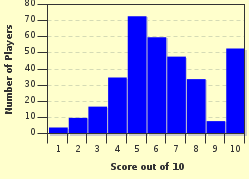Quiz Answer Key and Fun Facts
1. In order to be a snowplow driver, you should know about the types of snow. Which of the following are actual, official types of snow as recognized by the National Air Transport Association?
2. What is the name of the type of plow that pushes snow to both sides simultaneously?
3. What is the name of the type of plow that can push snow to one side or the other, depending on need?
4. Once the snow is plowed almost to the edge of the runway or taxiway, you need another piece of equipment to get the snow over the lights and away from the pavement. What equipment is used for that?
5. What could you put on a slick runway to improve braking action?
6. Deicing fluid can be used to melt packed snow and ice?
7. What kind of instrument is used on airports to quantify the runway braking action?
8. When snow is plowed the result is a pile of snow along the edge of the pavement. What is this pile of snow called?
9. Sometimes blowing snow will start to pile up on a plowed runway and form little lumps or drifts. What are these drifts called?
10. Which of the following makes snowplows?
Source: Author
deputygary
This quiz was reviewed by FunTrivia editor
Exit10 before going online.
Any errors found in FunTrivia content are routinely corrected through our feedback system.

